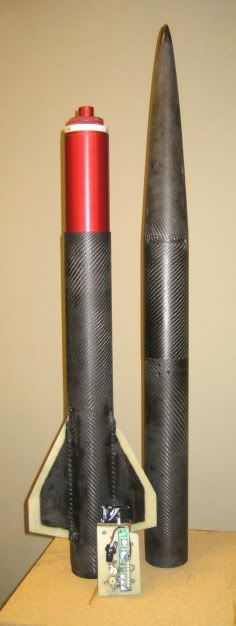sailmike
Well-Known Member
- Joined
- Jan 19, 2009
- Messages
- 498
- Reaction score
- 3
I've lately been toying with the idea of building a rocket capable of level 3 flight, but still light enough to take most 38 mm motors. I'd like to be able to fly on a 75 mm M1850. My tentative design is almost 7' tall and 4.5" in diameter. Thing is I don't know how many layers of 5.6 oz carbon is the minimum to handle that motor. I've also thought about going with John Cokers idea of using honeycomb to make the body tubes.
Another thing I've been thinking about is the centering rings. They hold the motor to the body tube, but do so perpendicularly to the body tube. That is the worst angle to brace the motor. So, with that in mind, the centering rings wouldn't have to be very thick and three rectangular pieces could be glued to the forward side of the rings and from body tube to motor tube.
My design calls for a conical nosecone, because I would have to fabricate my own and that would the easiest to make. Can't seem to upload my file, it's too big.
So, how many layers is the minimum at 4.5" diameter to handle a M1850?
Thanks a lot,
Mike
Another thing I've been thinking about is the centering rings. They hold the motor to the body tube, but do so perpendicularly to the body tube. That is the worst angle to brace the motor. So, with that in mind, the centering rings wouldn't have to be very thick and three rectangular pieces could be glued to the forward side of the rings and from body tube to motor tube.
My design calls for a conical nosecone, because I would have to fabricate my own and that would the easiest to make. Can't seem to upload my file, it's too big.
So, how many layers is the minimum at 4.5" diameter to handle a M1850?
Thanks a lot,
Mike












